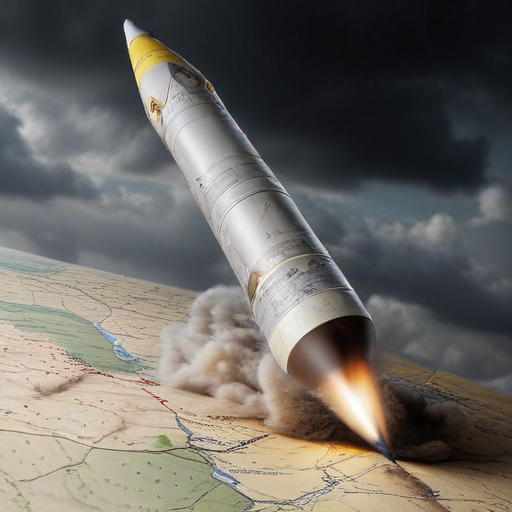The Kremlin launched a new intermediate-range ballistic missile at Ukraine in a direct response to Kyiv’s recent use of American and British missiles that can reach deeper into Russian territory. In a televised address, President Vladimir Putin announced that the newly developed missile, referred to as the Oreshnik, which translates to “hazelnut tree,” travels at speeds ten times that of sound and can target any Ukrainian ally that supports attacks against Russia.
Putin asserted the right to use these weapons against military facilities in nations that permit the use of their arms against Russian targets. This statement followed a prior approval from President Joe Biden allowing Ukraine to utilize U.S.-made ATACMS missiles for targeted strikes within Russia.
Pentagon officials confirmed that this missile is an experimental type derived from the RS-26 Rubezh intercontinental ballistic missile (ICBM). The missile is capable of carrying both conventional and nuclear warheads, raising significant concerns in the international community. The U.S. was informed about the missile launch through established channels for nuclear risk reduction.
The missile strike reportedly targeted a known missile factory in Dnipro and came in retaliation for previous Ukrainian strikes that damaged an ammunition depot and resulted in casualties in Russia’s Bryansk and Kursk regions. As tensions escalated, Putin also indicated a commitment to warning civilians prior to any future missile strikes, a shift from prior practices.
Ukrainian President Volodymyr Zelenskyy condemned the missile use as a severe escalation of the conflict and a blatant violation of international agreements, expressing concern over the lack of a strong global response. He cautioned that complacency could embolden Putin’s aggressive stance further.
In a broader context, the strike reflects ongoing aggressive military actions as well as strategic posturing between Russia and NATO countries. Experts suggest that the introduction of such an intermediate-range missile serves as a method for Russia to signal both Ukraine and the West of its military capabilities while highlighting the dangers of escalation.
This complex scenario underscores the precarious balance of power in the region. The recent authorization for Ukraine to use longer-range missiles potentially places Russia in a more vulnerable position, complicating the logistics of its military operations. While the situation remains dire, continued international support for Ukraine could help foster resilience and strategic advantage against aggression.
In summary, the launch of the Oreshnik missile is a significant development in the ongoing conflict, indicating heightened tensions and a potential restructuring of military strategies on both sides. As the international community monitors these escalating actions, there remains hope that sustained diplomatic efforts combined with military support can lead to a resolution and a more secure future for Ukraine and its allies.
